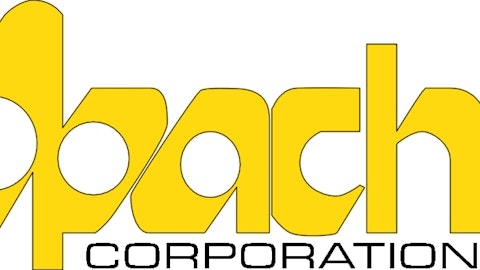The U.S. military has a reputation as a somewhat secretive organization. But in one respect at least, the Pentagon is one of the most “open” of our government agencies. Every day of the week, rain or shine, the Department of Defense tells U.S. taxpayers what contracts it’s issued, to whom, and for how much — all right out in the open on its website.

So what has the Pentagon been up to this week?

In five short days, the Pentagon blew right through its weekly budget, awarding nearly $12.9 billion in contracts. Here are a few of the big line-items.
Solar power
More than half the money shelled out last week went to “green energy.” On Tuesday, the Pentagon announced a Power Purchase Agreement that earmarked $7 billion to buy solar energy from an array of 22 individual companies. Big utility concerns participating in the contract, including Dominion Resources, Inc. (NYSE:D), NRG Energy Inc (NYSE:NRG), and BP plc (ADR) (NYSE:BP) are likely to reap the bulk of the “task orders” handed out under this contract, but smaller players such as Element Power, Enel Green Power, and Emerald Infrastructure will have a chance to bid on slices of the pie as well.

Solar farm at Furnace Creek Ranch, Death Valley, Calif. Source: Wikimedia Commons.
Six meters? That’s close enough for government work
Raytheon Company (NYSE:RTN) claimed a $54 million contract on Monday — certainly smaller than the Power Purchase Agreement, but sizable in its own right. The U.S. Army is paying Raytheon $54 million to supply it with 765 rounds of Excalibur 155mm ammunition to be fired from Army Paladin self-propelled howitzers, and M198 and M777 towed artillery pieces. That’s a bit more than $70,000 a shell — but the Army thinks it’s worth it. According to Raytheon, the GPS-guided Excalibur round is 10 times more effective than conventional artillery shells, and accurate to within 6 meters. By way of comparison, a standard “dumb” artillery round will miss its intended target by as much as 267 meters, half the time. And to put this contract in context, the 765 Excalibur rounds the Pentagon contracted for last week is more than the entire number of rounds the Army has fired since the Excalibur came into existence.
Funds for fighters
Another smallish contract (in Pentagon terms), but with outsized significance, came to United Technologies Corporation (NYSE:UTX), which won a $70 million contract to begin purchasing “long lead components” necessary to build F135 turbofan engines to power 39 F-35 fighter jets destined for the U.S. Air Force, Navy, and Marines — and for the air forces of allied nations Italy, the United Kingdom, and Norway as well. As UTC continues with the process of building the engines, expect further funds to be awarded for their manufacture.
Tiny, intelligent, flying bombs
Meanwhile, tiny unmanned aerial vehicle maker AeroVironment, Inc. (NASDAQ:AVAV) continues in its own quest to make supersized fighter jets like the F-35 obsolete. On Wednesday, AeroVironment won a $16 million order to supply an undisclosed number of “Switchblade” UAVs — cylindrical flying robots, armed with a networked camera to help operators guide them to their targets, and a small bomb that can be detonated once those targets are in range.
Neither AV nor the Army is saying how many Switchblades were ordered last week, but chances are, they won’t be enough. In February, an Army official was quoted saying “we need dramatically more” Switchblades. So this could be only the start of the contracts coming AV’s way.
Opportunities on the horizon
So much for the contracts that the Pentagon told us about last week. Now, let’s move on to a contract that may not yet be incorporated into defense contractors’ stock prices.
Late last week — Friday, in fact — DefenseNews.com reported that the Taiwanese Defense Ministry has just added $187 million to its budget for 2014/2015, to purchase a pair of used Perry-class frigates from the U.S. Navy. Taiwan already has eight Perrys in its fleet, built locally by Taiwanese shipbuilder China Shipbuilding.

Perry-class frigate USS Carr (FFG 52) off the Liberian coast. Source: Wikimedia Commons.
Conceivably, the two Perrys Taiwan wants to buy could also be built locally. But last year, GlobalSecurity.org reported that the Taiwanese defense minister was negotiating a purchase of decommissioned USN frigates instead (estimating the cost at roughly $239 million). So that seems to be the more likely theory. The vessels are likely to receive retrofitting, presumably at General Dynamics Corporation (NYSE:GD)‘ Bath Iron Works, one of their original builders, as well as upgrades prior to delivery, in particular the addition of AN/SQR-19 Towed Array Sonar systems from Lockheed Martin Corporation (NYSE:LMT).
While the details aren’t yet all clear, and no notification of a sale has yet been submitted to Congress for approval, just knowing that the contracts are “out there” puts you a step ahead of the folks on Wall Street.
The article Defense News Roundup: Will the U.S. Army Go Solar? originally appeared on Fool.com.
Fool contributor Rich Smith has no position in any stocks mentioned. The Motley Fool recommends AeroVironment and Dominion Resources (NYSE:D) and owns shares of AeroVironment, General Dynamics, Lockheed Martin, and Raytheon.
Copyright © 1995 – 2013 The Motley Fool, LLC. All rights reserved. The Motley Fool has a disclosure policy.





